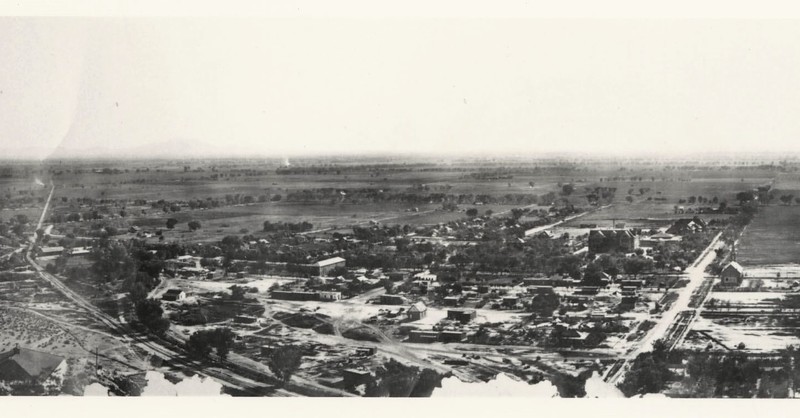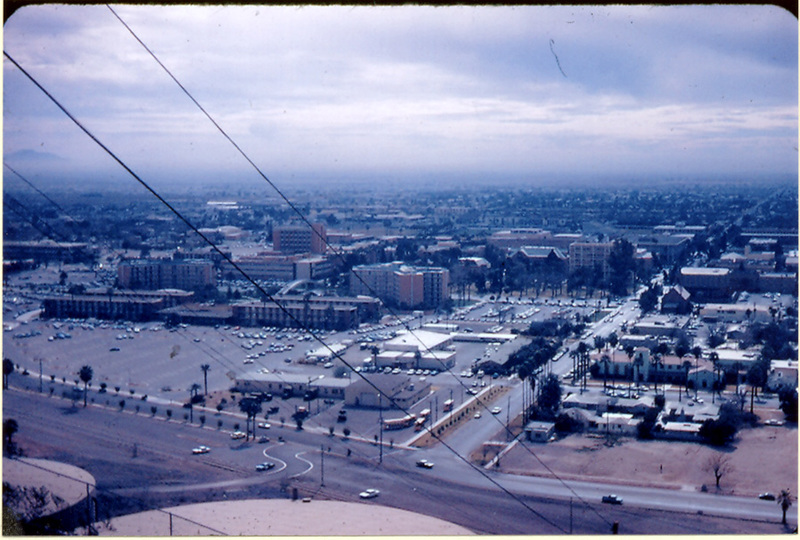
San Pablo embodied the story of Tempe's Mexican pioneers. The neighborhood fell victim to the impacts of racial discrimination and progress.
The area in Tempe between College Avenue and Veterans Way, on the northside of University Drive, is currently home to several Arizona State University (ASU) buildings such as the Fulton Center, Mona Plummer Aquatic Center, as well as several popular restaurants. The triangular shaped area has also housed university students since the late 1950’s. Residence halls including Manzanita Hall, Palo Verde East and West, San Pablo, and most recently, Tooker House, are where ASU students currently call home. However, long ago a different group of people also called this area home. They were the descendants of Mexican pioneers who played an important role in establishing and developing Tempe. This area was their home for over seventy years called San Pablo.
By the mid-19th century, Hispanic settlers migrated north into central Arizona from Sonora and Tucson for economic opportunities. Political turmoil in Sonora and constant Apache raids on settlements in southern Arizona drove migrants North. At the same time, the influx of Anglo settlers created land disputes, as many long-time Hispanic landowners could not provide proof of land ownership and lost their lands. The lax system of property rights in Mexico was not suitable to the strict American legal system. As migrants made their way into the Salt River Valley, many of the Hispanic pioneers would settle south of the river, in the region that would become Tempe. Natives to the southwestern region, Mexican settlers brought with them extensive knowledge of adobe building techniques, canal building, and irrigation farming; they became essential to the growth of the Salt River Valley.
The names William H. Kirkland, Winchester Miller, and Charles Trumbull Hayden are now famously associated with Tempe’s early history. However, many Hispanic families also played an important role in the founding and development of Tempe, though that story has not been well told. The Sotelo, Soza, and Gonzales families provided the knowledge and labor that created the community. Hispanic workers helped to build canals in Tempe, such as the Kirkland-McKinney Ditch and the San Francisco Canal. They also built Hayden’s flour mill and ferry. Hispanic families owned large acres of land west and east of the mill and became influential leaders in the region. The Sotelo family provided financial assistance to help start the Tempe Normal School, which would become Arizona State University. In 1872, Hispanic laborers joined together in an effort to form a new settlement. With the help of William H. Kirkland, who donated 80 acres of his land, Mexican families had a place they could call home, named San Pablo. The Arizona Citizen reported:
The Tempe people, not satisfied with Hayden’s Ferry, have laid out a new town just alongside named San Pablo and the proceeds of the sale of the town lots is to be devoted to the building of a Catholic church.
The Catholic church was dedicated on March 10, 1881 to Nuestra Señora del Carmen (Our Lady of Mount Carmel). The small adobe structure stood at the base of the butte overseeing San Pablo with a cemetery located nearby. The church was relocated in 1903 to the northwest corner of 8th Street and Willow Ave (University Drive & College Avenue) to accommodate the growing population. Today, it is known as the All Saints Catholic Newman Center.
The character of San Pablo reflected the expertise of the Mexican community in building adobe structures. Using local materials--including the clay found on a lot--laborers formed adobe blocks, dried them in the sun, and used them to build homes and other buildings. Thick walls of adobe homes offered cooling in summer and provided insulation in the winter. As historian Scott Soliday has noted about the community: “Homes in San Pablo reflected the architecture of the Sonoran frontier–flat-roofed adobes with plain facades set right up to the street, with large enclosed yards in [the] back…In the summertime, ollas [pots] filled with cool drinking water were hung from porches, and residents bought wood for cooking from Indian peddlers that came to town.” The community also had an active economic life. Some of the businesses in the neighborhood included a general merchandise store owned by Jesus Alvarez, La Reforma Saloon owned by E. Barrogan, and the Soto and Salia’s grocery store. Other establishments were Old Jim Murphy’s general store and a saloon, owned by Jesus Perez, that served “Tanglefoot” whiskey and Mexican food. Likewise, the children of San Pablo and Anglo children attended classes together in Tempe’s first schoolhouse, an adobe building located on 8th Street (University) & Mill Avenue. Even so, the roots of segregation were being laid, San Pablo became known as “East Tempe” or “Mexican Town” to the Anglo community.
After more than three decades of cooperation with the region’s Hispanic communities, Tempe’s Anglo community began to implement segregation measures in the 1910s. This coincided with an increase in the Mexican population in Tempe following the Mexican Revolution in 1910. Racial discrimination and segregation in Tempe became pervasive. The old Eighth Street School, Tempe Beach Pool, movie theaters, and other public buildings became segregated facilities. Even the Tempe Fire Department was segregated, with only Company No. 1 handing fires in “Mexican Town.” San Pablo, along with other Hispanic neighborhoods grew isolated from the neighboring communities, becoming segregated “barrios.” During this period of rising segregation, San Pablo steadily grew in size and population as immigrants moved into the town. Also, many original landowning Hispanic families lost their lands as the result of structured racism and segregation. According to Jessica Bridges Robinson, “Many of the early Mexican homesteaders had their land claims stripped away or invalidated within years of moving to the area…they were often unable to defend their land and water rights, as very few San Pablo residents had access to the Anglo-run legal and political systems.” As these families were pushed out of their lands, they also moved to San Pablo. Hispanic leaders began to emerge to fight for their rights and against injustices. Groups such as Liga Protectora Latina and Alianza Hispano-Americana worked to protect the rights of the Mexican-American population.
Unfortunately, the first official Hispanic settlement in Tempe, San Pablo, disappeared due to the expansion of Arizona State University. In the post-war period, student enrollment increased and ASU expanded rapidly, crossing University Avenue. The university made plans to acquire property to build new student dormitories, as well as a new football stadium. Using the tools of urban renewal, ASU first devalued the properties in San Pablo by legally labeling them as condemned lands. Then ASU paid low prices to the residents of San Pablo to acquire their homes and land through eminent domain. After the first few properties were sold, ASU immediately began tearing down the homes. Mexican-Americans were pushed out from their homes and forced to move. Many San Pablo residents relocated to the La Victoria neighborhood. Even so, the loss was felt palpably by the community. Upon returning from military service and seeing the wreckage of his community for the first time, San Pablo resident, Joe Soto, said “[it] looked like a bomb had fallen and just wiped everything out...They say a lot of people were crying, a lot of people thought that they were getting cheated.” Another resident said, “it left us with a lost empty feeling in our hearts for our barrio was the land of our birth, our freedom and identity” The loss of San Pablo at the vibrant heart of Tempe also obscured the contributions that Mexican Americans had made to the region. Historians associated with the Chicano movement of the 1970s began to resuscitate that history and recently the Tempe History Museum has featured the story of San Pablo prominently in its exhibitions.
Images









